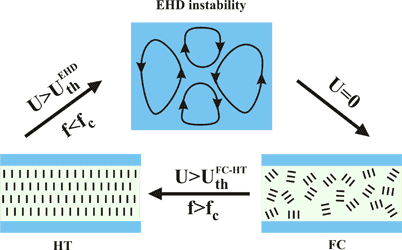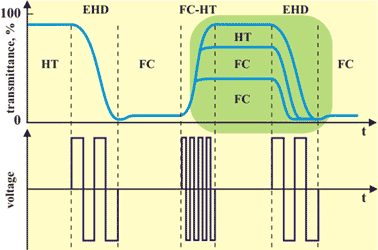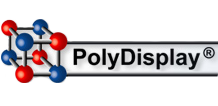Introduction
The information age and needs of today’s society creates great demands on the flow and visual communication of information. The types of visual communication extend from personal displays like those in PDAs, mobile phones and wrist watches to huge outdoor displays for public information and advertisements.
The majority of the displays that people are used to see are of the emissive type: CRT TVs and monitors, plasma TVs, back lighted LCDs for direct view and back projection TVs, laptop TFT back lighted LCDs, displays in mobile phones and PDAs, LED displays in shops and along the roads. All these displays either produce the light or need an internal light source to show the information and suffer from a mutual disadvantage – they get dimmer in bright light conditions and the information is partially or completely washed out in direct sunlight; the display turns out to be unreadable.
Many LCDs based on nematic liquid crystals have a good readability at limited viewing angles and suffer from decreasing contrast at oblique angles.
It is also desirable that the image on the display is steady, with no flickering, since this reduces the strain on the eyes of the user. This can be achieved using displays with high refresh rates or, preferably, a so called bi-stable display or a display with image memory, that maintains the written image by itself with no need for refreshing. Bi-stability of the display is also important from the point of view of power consumption. No power is used when a static picture is shown as no update is required. In short EASL DMD™ is more than a bi-stable technology, it is a polystable technology.
EASL DMD™ technology owned by PolyDisplay AS has the desired advantages mentioned above, which brings it close to visual performance of ink on paper: it is reflective, poly-stable and inherently white, have a good contrast, reflectivity and extremely wide viewing angle.
EASL - Optical states
The smectic A LC material have two distinct optical states which determine the contrast of the EASL display. In the optically clear, or homeotropic, state the molecules of the LC are aligned perpendicular to the substrates (so-called homeotropic structure). The visual appearance of this state is window-like transparent, and if the display is viewed on a black or coloured background, the transparent area of the display is seen as black or coloured. The schematic light transmission of this state is shown on the picture below. The transmittance of the transparent state approaches the transmittance of glass and is higher than 90 %.

The second optical state, where the layers of smectic LC molecules are bent to form so called focal conic domain structure; the liquid crystals scatter the incident light in all directions. The scattering of light by this state is caused by a multiple refraction of the light beams on the boundaries between focal conic domains. The scattering effect is virtually the same for all wavelengths in the visual part of the spectrum (the scattering spectrum is flat), giving the scattering state a milky white opaque appearance. If the display is viewed on a black or coloured background, the appearance of the scattering state is still white.
The transparent and scattering states used in EASL displays provide excellent readability at any angles without any substantial loss of contrast or colour change. Polarizing filters that are commonly used in most of LCDs (TN, STN, FSLC, BiNem, ZBD, IPS, OCB, etc.), which reduce the viewing angles and light efficiency of the displays, are not required for EASL display. The light is practically not absorbed by the EASL displays; it is either reflected or transmitted.
As the transparent and scattering optical states are used in EASL displays, the displays are reflective and comprise all the advantages of reflective displays mentioned in the introduction. The outdoors readability of EASL displays is superior to any emissive display technology. As an example, underneath is a comparison with a conventional TFT LCD in a laptop PC outdoors and indoors:
It also follows from the optical states used in EASL displays that they can be used as transparent, “see through” displays when the information on the screen appears on a transparent background or as reflective display when the display is placed in front of a black or coloured background:
Manufacturing the Display cell
The liquid crystal material is placed in a thin capillary between two flat glass substrates. The distance between the substrates is kept by special particles with uniform size – spacers. The inner surface of the substrates is coated by parallel stripes of a transparent conductive material (ITO electrodes) in order to be able to apply an electric field on the LC material. The perimeter of the capillary is sealed by an environmentally resistant gasket adhesive.

Display operation
The switching between transparent and scattering states is performed electrically by an AC signals. When the voltage is applied on the transparent electrodes, the electric field formed between the electrodes influence the state of the liquid crystal. The transitions between the two states are separated by the field frequency. When an electric field with frequency higher than critical frequency is applied to the LC in focal conic state, the molecules of the LC with a positive dielectric anisotropy are forced to align along the field (so called Freedericksz transition) and the LC undergoes a transition to transparent structure.
When an electric field with frequency lower than critical frequency is applied to LC in homeotropic state, an electro convective process (electrohydrodynamic instability) starts to take place. The convecting LC material causes strong scattering of light. As soon as the electric field is removed, the dynamic scattering structure of convecting LC transforms to a static focal conic scattering structure.

Both transitions have a distinct voltage threshold, meaning that the transition occurs over certain voltage amplitude, and there is no optical response when the amplitude is below the threshold value. The dependence of display transmission on applied voltage has an abrupt character above the threshold value. Both these features of smectic A material allow PolyDisplay ASA building a multiplexed EASL display. The figure below shows a plot of the display transmittance versus time depending on the frequency of applied AC signal.

As it can be seen on the transmittance-time plot above, both transparent and scattering states are stable for a long period of time without applying any voltage (up to many years). This “liquid memory” of EASL displays gives several advantages. First of all, there is no need to update the display when showing a static image, which reduces the power consumption dramatically with infrequent updates of the display. Secondly, the image memory gives infinite multiplexing capability that makes the resolution of EASL displays to be virtually unlimited. Any number of lines can be addressed since the lines that have been written do not require updating. This fact allows a passive matrix addressing method to be used. Active matrix components, like TFTs, are not required (see section 3.2).
For comparison, most of the LCD technologies, excluding bi-stable ones, and all the emissive technologies have a limit to the number of lines that may be addressed and suffer from reduced contract and image flickering when the number of lines exceeds a certain value.
Grey levels and colour
As can be seen from the transmittance-time plot above it is possible to define the levels of gray – the intermediate scattering states. The gray levels of EASL displays are also stable without power applied to the display, so EASL displays show multi-stability of the optical states.
EASL displays have a continuous scale of gray levels, meaning that the number of levels is virtually unlimited and is determined mostly by manufacturing specification parameters. Grey levels can be defined by modulation of duration, amplitude or frequency of the high frequency signal.
Colour images can be shown using colour filters, coloured background or dichroic dyes.
